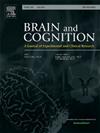White matter microstructure and cognitive abilities in 28-year-old offspring prenatally exposed to maternal anxiety: A prospective exploratory multimodal brain imaging study
IF 1.4
3区 心理学
Q3 NEUROSCIENCES
引用次数: 0
Abstract
Prenatal exposure to maternal psychological distress (PEMPD) can affect brain development and cognition, but its long-term impact on adult white matter (WM) microstructure and cognition remains unclear. In an exploratory study, we examined 28-year-old offspring (n = 52) exposed to high maternal anxiety (HA group; State Anxiety > 43) or low-to-medium maternal anxiety (LMA group; State Anxiety ≤ 43) at 12–22 weeks of gestation, a critical period for WM development. Whole WM voxel-based analysis assessed microstructural differences using diffusion magnetic resonance imaging (dMRI), including standard diffusion tensor imaging (DTI), advanced methods such as diffusion kurtosis imaging, neurite orientation dispersion and density imaging, and myelin water imaging. Group differences in WM and cognition (Vocabulary, Perceptual Organization, Processing Speed) were tested using ANCOVAs respectively MANOVA (Holm-Bonferroni-corrected) adjusting for birth weight and postnatal maternal anxiety. The HA group showed lower radial and mean diffusivity and a trend for lower isotropic volume fraction) in the left superior corona radiata. Vocabulary scores were consistently lower in the HA group across ages 14–15 and 28 (moderate effect). The left-lateralized WM differences may reflect altered axonal architecture or cellular composition, possibly originating in utero. The use of advanced and complementary microstructural metrics highlights subtle WM alterations that mayshape neurodevelopmental trajectories and underlie later cognitive outcomes.
产前暴露于母亲焦虑的28岁后代的白质微观结构和认知能力:一项前瞻性探索性多模态脑成像研究
产前暴露于母亲心理困扰(PEMPD)会影响大脑发育和认知,但其对成人白质(WM)微观结构和认知的长期影响尚不清楚。在一项探索性研究中,我们检查了28岁的后代(n = 52)暴露于高母亲焦虑(HA组;状态焦虑;43)或低至中度产妇焦虑(LMA组;妊娠12-22周的状态焦虑≤43),是WM发展的关键时期。基于体素的全WM分析使用扩散磁共振成像(dMRI)评估微观结构差异,包括标准扩散张量成像(DTI)、扩散峰度成像、神经突取向弥散和密度成像以及髓鞘水成像等先进方法。WM和认知(词汇量、知觉组织、加工速度)的组间差异分别采用方差方差分析(ANCOVAs)进行校正,校正出生体重和产后母亲焦虑。HA组在左上放射状日冕的径向扩散率和平均扩散率较低,各向同性体积分数呈较低趋势。在14-15岁和28岁年龄段,HA组的词汇得分一直较低(中等影响)。左偏侧WM的差异可能反映了轴突结构或细胞组成的改变,可能起源于子宫。先进和互补的微观结构指标的使用突出了细微的WM改变,这些改变可能会塑造神经发育轨迹,并成为后来认知结果的基础。
本文章由计算机程序翻译,如有差异,请以英文原文为准。
求助全文
约1分钟内获得全文
求助全文
来源期刊

Brain and Cognition
医学-神经科学
CiteScore
4.60
自引率
0.00%
发文量
46
审稿时长
6 months
期刊介绍:
Brain and Cognition is a forum for the integration of the neurosciences and cognitive sciences. B&C publishes peer-reviewed research articles, theoretical papers, case histories that address important theoretical issues, and historical articles into the interaction between cognitive function and brain processes. The focus is on rigorous studies of an empirical or theoretical nature and which make an original contribution to our knowledge about the involvement of the nervous system in cognition. Coverage includes, but is not limited to memory, learning, emotion, perception, movement, music or praxis in relationship to brain structure or function. Published articles will typically address issues relating some aspect of cognitive function to its neurological substrates with clear theoretical import, formulating new hypotheses or refuting previously established hypotheses. Clinical papers are welcome if they raise issues of theoretical importance or concern and shed light on the interaction between brain function and cognitive function. We welcome review articles that clearly contribute a new perspective or integration, beyond summarizing the literature in the field; authors of review articles should make explicit where the contribution lies. We also welcome proposals for special issues on aspects of the relation between cognition and the structure and function of the nervous system. Such proposals can be made directly to the Editor-in-Chief from individuals interested in being guest editors for such collections.
 求助内容:
求助内容: 应助结果提醒方式:
应助结果提醒方式:


